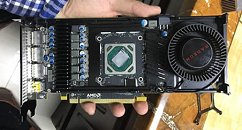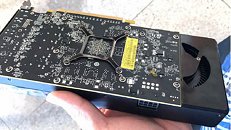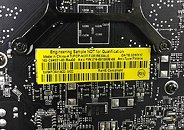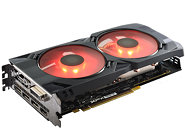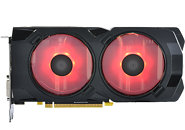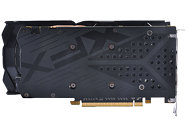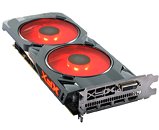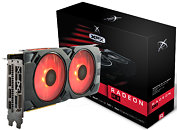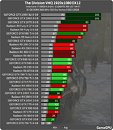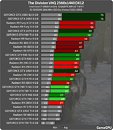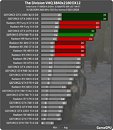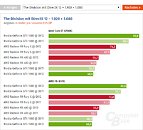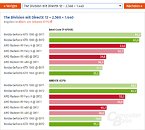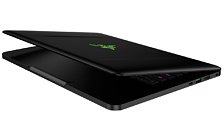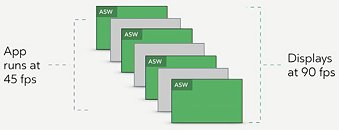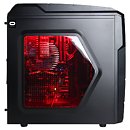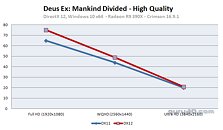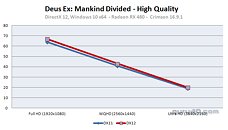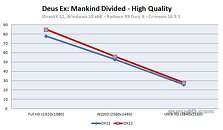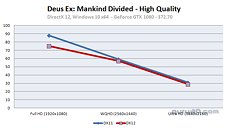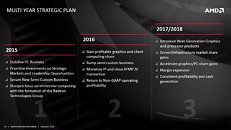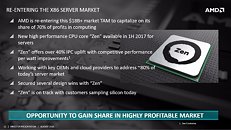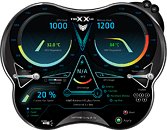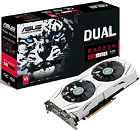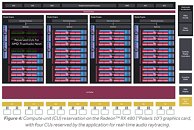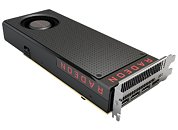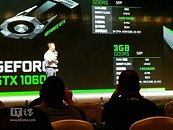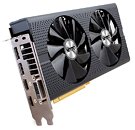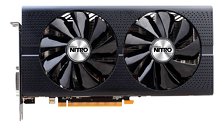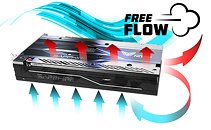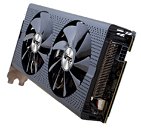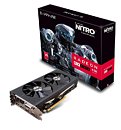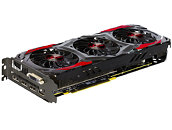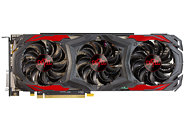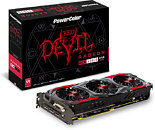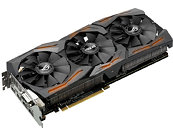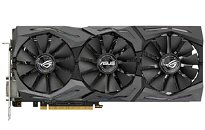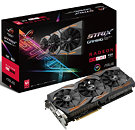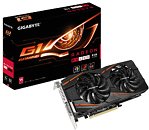Mar 26th, 2025 09:19 EDT
change timezone
Latest GPU Drivers
New Forum Posts
- Discussion: linux-6.14.X (11)
- Has anyone tried enabling FSR 4 on NVIDIA cards? (18)
- Should you physically remove secondary NVMe drives when performing a clean Windows install? (9)
- Packing Ties vs. Cable/Zip Ties (3)
- The TPU UK Clubhouse (25959)
- Windows 10 Vs 11, Which one too choose? (104)
- Recommended PhysX card for 5xxx series? [Is vRAM relevant?] (220)
- Is RX 9070 VRAM temperature regular value or hotspot? (208)
- any alternative to razer synapse to adjust mouse settings (5)
- What features do you want to see in a first person survival horror game? (40)
Popular Reviews
- Assassin's Creed Shadows Performance Benchmark Review - 30 GPUs Compared
- be quiet! Pure Rock Pro 3 Black Review
- ASUS ProArt X870E-Creator Wi-Fi Review
- ASRock Radeon RX 9070 XT Taichi OC Review - Excellent Cooling
- Pulsar Feinmann F01 Review
- Sapphire Radeon RX 9070 XT Nitro+ Review - Beating NVIDIA
- ASRock Phantom Gaming B860I Lightning Wi-Fi Review
- ASUS GeForce RTX 5070 TUF OC Review
- AMD Ryzen 9 9950X3D Review - Great for Gaming and Productivity
- AMD Ryzen 7 9800X3D Review - The Best Gaming Processor
Controversial News Posts
- AMD RDNA 4 and Radeon RX 9070 Series Unveiled: $549 & $599 (260)
- AMD Radeon RX 9070-series Pricing Leaks Courtesy of MicroCenter (158)
- MSI Doesn't Plan Radeon RX 9000 Series GPUs, Skips AMD RDNA 4 Generation Entirely (142)
- Microsoft Introduces Copilot for Gaming (123)
- AMD Radeon RX 9070 XT Reportedly Outperforms RTX 5080 Through Undervolting (118)
- NVIDIA Reportedly Prepares GeForce RTX 5060 and RTX 5060 Ti Unveil Tomorrow (115)
- Over 200,000 Sold Radeon RX 9070 and RX 9070 XT GPUs? AMD Says No Number was Given (100)
- NVIDIA GeForce RTX 5050, RTX 5060, and RTX 5060 Ti Specifications Leak (96)
News Posts matching #Radeon RX 480
Return to Keyword Browsing
NVIDIA GeForce GTX 1070 Ti Could Feature 9 Gbps GDDR5 Memory
NVIDIA's upcoming GeForce GTX 1070 Ti performance-segment graphics card, which could be launched toward the end of this month, with market-availability following in early-November; could feature 9 Gbps GDDR5 memory, and not the previously-thought 8 Gbps GDDR5. This "almost-GTX 1080" answer of NVIDIA to AMD's RX Vega 56 features 2,432 CUDA cores, 152 TMUs, 64 ROPs, and a 256-bit wide GDDR5 memory interface, holding 8 GB of memory. It will be available at a price-point competitive with AMD's RX Vega series, and could come in custom-designs by NVIDIA's add-in card partners.
The GTX 1070 Ti will be NVIDIA's second SKU to max-out the GDDR5 clock band. The company had, in late-2016, refreshed the mid-range GeForce GTX 1060 6 GB to feature 9 Gbps memory in an effort to compensate for its narrower 192-bit wide memory interface, improving its competitiveness against the Radeon RX 480 8 GB. The company had also, at the time, refreshed the GTX 1080 with faster 11 Gbps GDDR5X memory, which means the GTX 1080 cards with the SKU's original 10 Gbps GDDR5X memory clock could be phased out of the market. NVIDIA will ride into the crucial Holiday 2017 season with its existing GeForce "Pascal" family, bolstered by the new GTX 1070 Ti.
The GTX 1070 Ti will be NVIDIA's second SKU to max-out the GDDR5 clock band. The company had, in late-2016, refreshed the mid-range GeForce GTX 1060 6 GB to feature 9 Gbps memory in an effort to compensate for its narrower 192-bit wide memory interface, improving its competitiveness against the Radeon RX 480 8 GB. The company had also, at the time, refreshed the GTX 1080 with faster 11 Gbps GDDR5X memory, which means the GTX 1080 cards with the SKU's original 10 Gbps GDDR5X memory clock could be phased out of the market. NVIDIA will ride into the crucial Holiday 2017 season with its existing GeForce "Pascal" family, bolstered by the new GTX 1070 Ti.
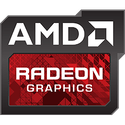
AMD "Polaris" Based Radeon RX 570 and RX 580 Pictured
AMD is preparing new SKUs based on its "Polaris 10" silicon, which are built on a more refined 14 nm FinFET process, to facilitate higher GPU clock speeds, and improved energy efficiency. These include the Radeon RX 580 and the Radeon RX 570. The reference-design boards of the two were pictured, and aren't strictly "rebadged" RX 480 and RX 470. The two feature higher clocks, and are supported by a redesigned VRM. The RX 570 draws power from a single 6-pin PCIe power connector, while the RX 580 draws it from a single 8-pin connector.
The core-configurations of the RX 580 and RX 570 aren't different from their predecessors - the RX 580 still features 2,304 stream processors, and the RX 570 features 2,048, but clock speeds are increased across the board. The RX 580 ticks at about 1340 MHz (vs. 1266 MHz of the RX 480), with its memory speed unchanged at 8.00 GHz (GDDR5-effective), while the RX 570 is clocked at 1244 MHz (vs. 1206 MHz of the RX 470), with its memory clock slightly increased to 7.00 GHz. The two cards also seem to do away with the DVI port. According to VideoCardz, the two cards could launch on the 18th of April, 2017.
The core-configurations of the RX 580 and RX 570 aren't different from their predecessors - the RX 580 still features 2,304 stream processors, and the RX 570 features 2,048, but clock speeds are increased across the board. The RX 580 ticks at about 1340 MHz (vs. 1266 MHz of the RX 480), with its memory speed unchanged at 8.00 GHz (GDDR5-effective), while the RX 570 is clocked at 1244 MHz (vs. 1206 MHz of the RX 470), with its memory clock slightly increased to 7.00 GHz. The two cards also seem to do away with the DVI port. According to VideoCardz, the two cards could launch on the 18th of April, 2017.

XFX Intros the Radeon RX 480 Crimson Edition
XFX introduced the Radeon RX 480 Crimson Edition 8 GB graphics card (model: RX-480P8LFR6). Based mostly on the board design of the RX 480 Double Dissipation card the company launched its RX 480 lineup with, this card features red LED illumination for the two fans, and the XFX logo on the top side of the cooler. As with the Double Dissipation, the Crimson Edition card features detachable, hard-swappable fans that stay off when the GPU is idling.
The card is clocked at 1288 MHz core, and 8.00 GHz (GDDR5-effective) memory, a minor core overclock against 1266 MHz reference. The card draws power from a single 8-pin PCIe power connector. Display outputs include three DisplayPorts, and one each of DVI and HDMI 2.0b. A full-length back-plate comes included. The company didn't reveal pricing. The company also plans to launch "Crimson Edition" variants of its RX 480 4 GB and RX 470 graphics cards.
The card is clocked at 1288 MHz core, and 8.00 GHz (GDDR5-effective) memory, a minor core overclock against 1266 MHz reference. The card draws power from a single 8-pin PCIe power connector. Display outputs include three DisplayPorts, and one each of DVI and HDMI 2.0b. A full-length back-plate comes included. The company didn't reveal pricing. The company also plans to launch "Crimson Edition" variants of its RX 480 4 GB and RX 470 graphics cards.

AMD Releases the Radeon Software Crimson ReLive 17.2.1 Beta Drivers
AMD today released the 17.2.1 Beta version of its Radeon Software Crimson ReLive. This release features Multi GPU profiles and support for For Honor (with an up to 4% performance improvement on Radeon RX 480) and Sniper Elite 4 (with a 5% performance improvement being registered here). Look after the break for a list of known, fixed issues.
As always, you can grab the drivers right here at TPU, through our revamped downloads section. Just follow the link below.DOWNLOAD: AMD Radeon Software Crimson ReLive Edition 17.2.1 Beta
As always, you can grab the drivers right here at TPU, through our revamped downloads section. Just follow the link below.DOWNLOAD: AMD Radeon Software Crimson ReLive Edition 17.2.1 Beta

Tom Clancy's "The Division" Gets DirectX 12 Update, RX 480 Beats GTX 1060 by 16%
Over the weekend, gamers began testing the new DirectX 12 renderer of Tom Clancy's "The Division," released through a game patch. Testing by GameGPU (Russian media site) shows that AMD Radeon RX 480 is about 16 percent faster than NVIDIA GeForce GTX 1060 6GB, with the game running in the new DirectX 12 mode. "The Division" was tested with its new DirectX 12 renderer, on an ASUS Radeon RX 480 STRIX graphics card driven by Crimson ReLive 16.12.1 drivers, and compared with an ASUS GeForce GTX 1060 6GB STRIX, driven by GeForce 376.19 drivers. Independent testing by German tech-site ComputerBase.de supports these findings.

AMD to Give Away Civilization VI with Radeon RX 480
AMD is readying a new graphics card promotion for Holiday 2016. The company is planning to give away game keys to "Sid Meier's Civilization VI" with both the 4 GB and 8 GB variants of its Radeon RX 480 graphics cards. Available through participating retailers, and in select markets, the promotion will be applicable to both the reference and custom-design graphics cards. Sapphire, for example, is giving away keys to the game with both its NITRO+ and reference-design RX 480 cards. Purchase receipts for the cards will come with special promotion codes that can be redeemed on the AMD Rewards website to enable the game directly to your Steam account. The 6th edition of the smash-hit turn-based strategy game, "Civilization VI" takes advantage of DirectX 12 through its latest patch, the Radeon RX 480 meets or exceeds its recommended system requirements.

ZOTAC Announces the ZBOX Magnus ERX480 Gaming Desktop
ZOTAC International, a global manufacturer of innovation, is pleased to introduce MAGNUS ERX480 as the world's first AMD powered Mini PC equipped with Polaris Architecture. The award-winning ZBOX MAGNUS Gaming Mini PC series, renowned for whisper quiet performance, brings a refreshing level of power and speed for every gamer. "We are always aiming to provide powerful solutions available to a wide audience and the MAGNUS ERX480 could be it" said Jacky Huang, Director of Mini PC.
MAGNUS is designed for gaming and entertainment. Hosting power that surpasses the requirements for experiencing virtual reality, MAGNUS is an ideal solution for both high-end gaming, premium entertainment, and much more. "The Radeon RX 480 with Polaris Architecture changes the gaming hardware dynamic with an effective cost-performance combination. We're excited to partner with ZOTAC, a well-established gaming mini PC manufacturer, to bring together the world first and most powerful AMD based gaming mini PC equipped with a Radeon RX 480" said Spencer Pan, AMD Corporate VP and President of Greater China.
MAGNUS is designed for gaming and entertainment. Hosting power that surpasses the requirements for experiencing virtual reality, MAGNUS is an ideal solution for both high-end gaming, premium entertainment, and much more. "The Radeon RX 480 with Polaris Architecture changes the gaming hardware dynamic with an effective cost-performance combination. We're excited to partner with ZOTAC, a well-established gaming mini PC manufacturer, to bring together the world first and most powerful AMD based gaming mini PC equipped with a Radeon RX 480" said Spencer Pan, AMD Corporate VP and President of Greater China.
iBuyPower Announces the Slate Gaming Desktop
iBUYPOWER proudly presents the next step forward in affordable, customizable systems with the brand new Slate. In an effort to offer powerful and affordable gaming PC's to the masses, we are pleased to announce that the Slate will be available at a Best Buy store near you! The iBUYPOWER Slate represents our commitment to creating powerful and cost-effective systems while providing sleek elegance. Featuring a unique front panel and a built in PSU-shroud, this system is coupled with the high-quality components that gamers love.

Razer Blade Notebooks Now Available in Europe
Razer, the leading global lifestyle brand for gamers, today announced the availability and distribution of its newest 12.5-inch Razer Blade Stealth ultraportable laptop and the 14-inch Razer Blade gaming notebook. Both of these feature-packed systems can be ordered today at razerzone.com with regional keyboard layouts for UK, Germany and France.
"The demand in Europe for a thin, powerful and portable laptop for gamers has inspired us every waking moment since we launched the Razer Blade five years ago," says Razer CEO and Co-Founder Min-Liang Tan. "We are happy to say that everything is finally in place to offer Razer's high-performance systems throughout Europe in 2016, with the features and support that gamers want, need and deserve."
"The demand in Europe for a thin, powerful and portable laptop for gamers has inspired us every waking moment since we launched the Razer Blade five years ago," says Razer CEO and Co-Founder Min-Liang Tan. "We are happy to say that everything is finally in place to offer Razer's high-performance systems throughout Europe in 2016, with the features and support that gamers want, need and deserve."

AMD Releases Radeon Software Crimson Edition 16.10.1 WHQL
AMD today released the WHQL-signed variants of the Radeon Software Crimson Edition version 16.10.1 drivers, which it released earlier this month. Besides optimization for "Gears of War 4" and "Mafia III," and CrossFire profiles for "Shadow Warrior 2," these drivers come with support for the Oculus Asynchronous Spacewarp feature on graphics cards based on the "Polaris 10" silicon (Radeon RX 480, RX 470). Grab the drivers from the links below.
AMD defines Asynchronous Spacewarp as the following.
AMD defines Asynchronous Spacewarp as the following.
ASW compares previously rendered frames, detects the motion between them, and extrapolates the position of scene components to create a new synthetic frame. Using this technology, synthetic frames will accurately approximate the fully-rendered frames they're designed to replace.DOWNLOAD: AMD Radeon Software Crimson Edition 16.10.1 WHQL for Windows 10 64-bit | Windows 10 32-bit | Windows 8.1 64-bit | Windows 8.1 32-bit | Windows 7 64-bit | Windows 7 32-bit

AMD and Oculus Shatter VR Barriers With $499 CyberPowerPC VR Ready System
AMD, CyberPowerPC, and Oculus VR announced a breakthrough Oculus VR-ready gaming desktop priced at just US $499. At the beginning of 2016, you needed to spend a minimum of $949 to build a desktop that meets Oculus VR minimum requirements. Under its hood, is an AMD FX-4350 quad-core processor, Radeon RX 470 4 GB graphics card, 8 GB of dual-channel memory, 1 TB of HDD storage, and a DVD drive. The desktop also includes a keyboard and mouse. The only other piece of hardware you need to spend on is the Oculus Rift HMD itself.
CyberPowerPC is also selling a slightly more premium variant in the Gamer Xtreme VR desktop, priced at just $699. For $200 more, you get an Intel Core i5 "Skylake" quad-core processor, Radeon RX 480 8 GB graphics, pre-installed Windows 10, and WiFi WLAN adapter, besides all that you get with the $499 variant.
CyberPowerPC is also selling a slightly more premium variant in the Gamer Xtreme VR desktop, priced at just $699. For $200 more, you get an Intel Core i5 "Skylake" quad-core processor, Radeon RX 480 8 GB graphics, pre-installed Windows 10, and WiFi WLAN adapter, besides all that you get with the $499 variant.

AMD to Bundle "Battlefield 1" Upgrade Code with Radeon RX 480 Graphics Cards
AMD is preparing a "Battlefield 1" promotion for its Radeon RX 480 graphics cards. Starting today, RX 480 purchases in select markets are eligible to receive Origin codes that upgrade your "Battlefield 1" Standard Edition purchase to the Early Enlister Deluxe Edition. As an Early Enlister, you get to play the game a few days ahead of the October 21 launch. The way this code works is that you add BF1 Early Enlister Deluxe Edition to card in the Origin store, and enter the code as a "promo code" during checkout. Its final price is reduced to that of the Standard Edition. If redeemed after launch, you get the Digital Deluxe Edition at the price of the Standard Edition.

AMD GPUs See Lesser Performance Drop on "Deus Ex: Mankind Divided" DirectX 12
Deus Ex: Mankind Divided is the latest AAA title to support DirectX 12, with its developer Eidos deploying a DirectX 12 renderer weeks after its release, through a patch. Guru3D put the DirectX 12 version of the game through five GPU architectures, AMD "Polaris," GCN 1.1, GCN 1.2, NVIDIA "Pascal," and NVIDIA "Maxwell," through Radeon RX 480, Radeon R9 Fury X, Radeon R9 390X, GeForce GTX 1080, GeForce GTX 1060, and GeForce GTX 980. The AMD GPUs were driven by RSCE 16.9.1 drivers, and NVIDIA by GeForce 372.70.
Looking at the graphs, switching from DirectX 11 to DirectX 12 mode, AMD GPUs not only don't lose frame-rates, but in some cases, even gain frame-rates. NVIDIA GPUs, on the other hand, significantly lose frame-rates. AMD GPUs tend to hold on to their frame-rates at 4K Ultra HD, marginally gain frame-rates at 2560 x 1440, and further gain frame-rates at 1080p. NVIDIA GPUs either barely hold on to their frame-rates, or significantly lose them. AMD has on multiple occasions claimed that its Graphics CoreNext architecture, combined with its purist approach to asynchronous compute make Radeon GPUs a better choice for DirectX 12 and Vulkan. Find more fascinating findings by Guru3D here.More graphs follow.
Looking at the graphs, switching from DirectX 11 to DirectX 12 mode, AMD GPUs not only don't lose frame-rates, but in some cases, even gain frame-rates. NVIDIA GPUs, on the other hand, significantly lose frame-rates. AMD GPUs tend to hold on to their frame-rates at 4K Ultra HD, marginally gain frame-rates at 2560 x 1440, and further gain frame-rates at 1080p. NVIDIA GPUs either barely hold on to their frame-rates, or significantly lose them. AMD has on multiple occasions claimed that its Graphics CoreNext architecture, combined with its purist approach to asynchronous compute make Radeon GPUs a better choice for DirectX 12 and Vulkan. Find more fascinating findings by Guru3D here.More graphs follow.

Vega Not Before 2017: AMD to Investors
In a leaked presentation meant for its investors, AMD states that it expects to launch the "Vega" GPU architecture no sooner than 2017. The company plans to get it out within the first half of 2017. What makes this decision significant is that the company isn't planning on making bigger GPUs on its existing "Polaris" architecture, and its biggest product is the $249 Radeon RX 480. This leaves the company's discrete GPU lineup virtually untended at key price-points above, against NVIDIA's GeForce GTX 1070, GTX 1080, and TITAN X Pascal, at least for the next five months.
In the mean time, AMD could launch additional mobile SKUs based on the Polaris 10 and Polaris 11 chips. The reasons behind this slow-crawl could be many - AMD could be turning its chip-design resources to the various semi-custom SoCs it's working on, for Microsoft and Sony, with their next-generation game consoles; AMD Vega development could also be running in-sync with market availability of HBM2 memory. 2017 promises to be a hectic year for AMD, with launch of not just Vega, but also its "ZEN" CPU architecture, the "Summit Ridge" processor, and APUs based on the CPU micro-architecture.
In the mean time, AMD could launch additional mobile SKUs based on the Polaris 10 and Polaris 11 chips. The reasons behind this slow-crawl could be many - AMD could be turning its chip-design resources to the various semi-custom SoCs it's working on, for Microsoft and Sony, with their next-generation game consoles; AMD Vega development could also be running in-sync with market availability of HBM2 memory. 2017 promises to be a hectic year for AMD, with launch of not just Vega, but also its "ZEN" CPU architecture, the "Summit Ridge" processor, and APUs based on the CPU micro-architecture.

Sapphire Releases TriXX Utility 6.0.0
Sapphire today released version 6.0.0 of TriXX its graphics card overclocking, tuning, and monitoring utility, included with Sapphire graphics cards, yet compatible with a wide variety of graphics cards. Version 6.0.0 comes with a revamped user-interface that not only gives you key readouts of your graphics cards, but also organizes its key functions so the main window doesn't look cluttered.
Since it's the first major release since AMD launched its new generation "Polaris" GPUs, TriXX supports the Radeon RX 480, RX 470, and RX 460; with special features supported on Sapphire custom-design graphics cards. To begin with, on the new Sapphire NITRO+ series graphics cards, it features the Fan Check function, which tests the health of the fans, and alerts customer support to send replacement fans. It also supports NITRO Glow, letting you customize RGB LED lighting, including 5 lighting presets. Lastly, you can now set up to five profiles for your settings.DOWNLOAD: Sapphire TriXX 6.0.0Image Courtesy: ZeppMan217
Since it's the first major release since AMD launched its new generation "Polaris" GPUs, TriXX supports the Radeon RX 480, RX 470, and RX 460; with special features supported on Sapphire custom-design graphics cards. To begin with, on the new Sapphire NITRO+ series graphics cards, it features the Fan Check function, which tests the health of the fans, and alerts customer support to send replacement fans. It also supports NITRO Glow, letting you customize RGB LED lighting, including 5 lighting presets. Lastly, you can now set up to five profiles for your settings.DOWNLOAD: Sapphire TriXX 6.0.0Image Courtesy: ZeppMan217

ASUS Unveils the Radeon RX 480 DUAL 4GB
ASUS unveiled the Radeon RX 480 DUAL 4GB graphics card (DUAL-RX480-O4G). Based on a non-reference design by ASUS, the card derives its name from a dual-fan cooling solution. It features a custom-design PCB, which is shorter than the one found on the company's STRIX graphics cards; and which draws power from a single 8-pin PCIe power connector. The cooler shroud is made of glossy white ABS plastic, and goes well with the color-scheme of some of ASUS' more recent mainline motherboards. Also on tap is a factory-overclock of 1320 MHz boost GPU, while the memory ticks at 7.00 GHz (GDDR5-effective). ASUS didn't reveal pricing, but we expect it to be priced under $220.

PowerColor Outs "Unlocked BIOS" for RX 480 RED Devil
PowerColor today released an optional "Unlocked BIOS" for its Radeon RX 480 RED Devil graphics card. Available through PowerColor DevilClub (and TechPowerUp), the BIOS is optional because it is intended only for power-users. The BIOS increases power-limits on the card, facilitating higher overclocking headroom and clock speed sustainability.
The obvious trade-offs here are higher power-consumption, temperatures, and noise. In fact, PowerColor strongly recommends against using the modded card with FurMark as the company found that it will damage even non-overclocked cards with the new BIOS. PowerColor, however, stated that flashing your card with the optional BIOS will not void your warranty.
DOWNLOAD: PowerColor RX 480 Unlocked BIOS
The obvious trade-offs here are higher power-consumption, temperatures, and noise. In fact, PowerColor strongly recommends against using the modded card with FurMark as the company found that it will damage even non-overclocked cards with the new BIOS. PowerColor, however, stated that flashing your card with the optional BIOS will not void your warranty.
DOWNLOAD: PowerColor RX 480 Unlocked BIOS

AMD Develops TrueAudio Next to Compete with NVIDIA VRWorks Audio
AMD is developing a new GPU-accelerated audio pipeline to rival NVIDIA VRWorks Audio, the TrueAudio Next. The company will take this technology to the developers through its GPUOpen initiative. TrueAudio Next will bolster AMD's VR technologies portfolio, with a hardware-accelerated real-time "audio ray-tracing" pipeline that adds realism to sound in a 3D scene by computing how sound waves interact with the various objects in it. This is essentially what NVIDIA's VRWorks Audio does.
At the silicon level, processing the interaction between sound and surfaces in a 3D scene takes significant amount of compute power. On AMD "Polaris" architecture GPUs, such as the Radeon RX 480, TrueAudio Next will take advantage of Compute Unit Reservation, a feature which allows apps to temporarily reserve a portion of the GPU's CUs. Real-time positional audio DSPs such as TrueAudio Next and VRWorks Audio are expected to gain prominence with VR games, as CPU-based procedural audio-pipelines can't keep up with the faster inputs of a VR HMD to changing the 3D scene, than conventional input devices. Accelerated audio pipelines are needed to ensure that the audio output is fluidly in-sync with the video output, to avoid affecting realism.
At the silicon level, processing the interaction between sound and surfaces in a 3D scene takes significant amount of compute power. On AMD "Polaris" architecture GPUs, such as the Radeon RX 480, TrueAudio Next will take advantage of Compute Unit Reservation, a feature which allows apps to temporarily reserve a portion of the GPU's CUs. Real-time positional audio DSPs such as TrueAudio Next and VRWorks Audio are expected to gain prominence with VR games, as CPU-based procedural audio-pipelines can't keep up with the faster inputs of a VR HMD to changing the 3D scene, than conventional input devices. Accelerated audio pipelines are needed to ensure that the audio output is fluidly in-sync with the video output, to avoid affecting realism.

High PCIe Slot Power Draw Costs RX 480 PCI-SIG Integrator Listing
AMD's design of the Radeon RX 480 graphics card, which draws over 75W of power from the PCI-Express x16 slot, has cost it a product listing on the PCI-SIG Integrators List. The list is compiled for hardware devices implementing the various PCI-Express specifications to the letter. The RX 480 is off-spec, in that it overdraws power from the slot, as the card needs more power than what the slot and the 6-pin PCIe power connector can provide while staying within specs. According to these specs, the slot can provide up to 75W of power, and the 6-pin connector another 75W. The RX 480 was tested to draw more than this 150W power budget.
What this means for AMD is that it cannot display the PCI-Express certification logo on the product or its marketing materials. This, however, may not affect AMD's add-in board (AIB) partners that are PCI-SIG members in their own right, and make graphics cards with their own sub-vendor IDs, provided their power-supply designs comply with PCIe specs. Custom-design cards with an 8-pin PCIe power connector, instead of 6-pin, may qualify as the combination of the 8-pin connector and the slot yields a power budget of 225W. AMD released a software fix to the issue of the cards overdrawing power from the slot, with the Radeon Software Crimson Edition 16.7.1 Beta.
What this means for AMD is that it cannot display the PCI-Express certification logo on the product or its marketing materials. This, however, may not affect AMD's add-in board (AIB) partners that are PCI-SIG members in their own right, and make graphics cards with their own sub-vendor IDs, provided their power-supply designs comply with PCIe specs. Custom-design cards with an 8-pin PCIe power connector, instead of 6-pin, may qualify as the combination of the 8-pin connector and the slot yields a power budget of 225W. AMD released a software fix to the issue of the cards overdrawing power from the slot, with the Radeon Software Crimson Edition 16.7.1 Beta.

HIS Announces the Radeon RX 480 IceQ X² Roaring
HIS announced its flagship Radeon RX 480 graphics card, the RX 480 IceQ X² Roaring 8 GB OC. Based on a slightly modified variant of its dual-fan IceQ X² cooling solution in use for the past few generations of its graphics cards; the card features a custom-design PCB. The cooler features a dense aluminium fin-stack heatsink, to which heat drawn from the GPU is conveyed by four 6 mm-thick copper heat pipes.
The heatsink is ventilated by a pair of 90 mm fans. These fans stay off when the GPU is idling. The metal cooler shroud features a die-cast ornament shaped like a roaring lion, an LED-lit HIS logo along the top, and a back-plate that covers the length of the PCB. The PCB itself features a 6-phase VRM that draws power from an 8-pin PCIe power connector, to support factory-overclocked speeds of 1120 MHz core, 1288 MHz boost, and an untouched 8 GHz (GDDR5-effective) memory.
The heatsink is ventilated by a pair of 90 mm fans. These fans stay off when the GPU is idling. The metal cooler shroud features a die-cast ornament shaped like a roaring lion, an LED-lit HIS logo along the top, and a back-plate that covers the length of the PCB. The PCB itself features a 6-phase VRM that draws power from an 8-pin PCIe power connector, to support factory-overclocked speeds of 1120 MHz core, 1288 MHz boost, and an untouched 8 GHz (GDDR5-effective) memory.

NVIDIA GeForce GTX 1060 3GB Equipped with Fewer CUDA Cores
NVIDIA's upcoming GeForce GTX 1060 3 GB is a little more than a variant of last month's GTX 1060 with half the memory. The SKU is positioned to compete with the Radeon RX 480 4 GB, at a price-point close to $200, and is expected to feature fewer CUDA cores. NVIDIA could even have a crack at $199. While the 6 GB variant launched last month features 1,280 CUDA cores spread across 10 streaming multiprocessors (SM), the 3 GB variant will feature 1,152 CUDA cores across 9 SM. This could also lower the TMU count from 80 to 72. The clock speeds appear to be unchanged, with the GPU core being clocked at 1506 MHz, with 1709 MHz GPU Boost, and 8 GHz (GDDR5-effective) memory, churning up 192 GB/s of memory bandwidth.

Sapphire Announces the Radeon RX 480 NITRO+
Sapphire announced its premium Radeon RX 480 graphics card, the NITRO+. Featuring a completely custom design, the card features the company's latest Dual-X cooling solution that combines a dense aluminium fin-stack heatsink, with a pair of easily detachable 95 mm fans, and an air-channel that directs hot air towards the top; and a custom-design PCB with a strong VRM, which draws power from a single 8-pin PCIe power connector.
The Radeon RX 480 NITRO+ comes in two variants, 4 GB and 8 GB. The 4 GB variant comes with clock speeds of 1208 MHz core, 1306 MHz boost, and 7 Gbps memory; while the 8 GB variant ships with 1208 MHz core, 1342 MHz boost, and 8 Gbps memory. Display outputs include two each of DisplayPort 1.4 and HDMI 2.0b, and a dual-link DVI connector. The unique NITRO Glow feature lets you make the LED-lit Sapphire logo useful, by cycling it between its default blue color, to a random RGB color, gradients based on PCB temperature and fan-speeds, a Sapphire TriXX-set color, or stay off.
The Radeon RX 480 NITRO+ comes in two variants, 4 GB and 8 GB. The 4 GB variant comes with clock speeds of 1208 MHz core, 1306 MHz boost, and 7 Gbps memory; while the 8 GB variant ships with 1208 MHz core, 1342 MHz boost, and 8 Gbps memory. Display outputs include two each of DisplayPort 1.4 and HDMI 2.0b, and a dual-link DVI connector. The unique NITRO Glow feature lets you make the LED-lit Sapphire logo useful, by cycling it between its default blue color, to a random RGB color, gradients based on PCB temperature and fan-speeds, a Sapphire TriXX-set color, or stay off.

PowerColor Announces the Radeon RX 480 RED DEVIL
TUL Corporation, a leading and innovative manufacturer of AMD graphic cards since 1997, has released a brand new video card in PowerColor Red Devil RX 480 8GB GDDR5. It is based on AMD's latest GCN 4 architecture designed for GloFo 14nm FinFET that delivers premium VR capability, increased level of performance, smooth VR, seamless support for next-gen gaming monitors, and CPU-free game streaming or recording. Furthermore, the model also supports AMD's newest technologies such as Direct 12 and Vulkan, FreeSync, and Liquid VR.
PowerColor Red Devil RX 480 8GB GDDR5 utilizes 8GB of GDDR5 memory with 2304 stream processors, ships with 1330MHz core clock speed, and has 2000MHz memory clock speed which is connected via a new high speed 256-bit memory interface. The 6+1 multi-phases board design enhances the power efficiency and stability, and also enables ultimate performance in overclocking mode with BIOS switch. In order to achieve better thermal solution in both ultra overclocking and silent overclocking mode, PowerColor Red Devil RX 480 adopts the newest fan technology called Double Blade III which increases airflows and prevents dust deposition on fans. The Double Blade III is made with triple 80mm 2-ball bearing fans, with 2pcs of 8mm and another 2pcs of 6mm nickel- plated heat pipe for the best heat dissipation.
PowerColor Red Devil RX 480 8GB GDDR5 utilizes 8GB of GDDR5 memory with 2304 stream processors, ships with 1330MHz core clock speed, and has 2000MHz memory clock speed which is connected via a new high speed 256-bit memory interface. The 6+1 multi-phases board design enhances the power efficiency and stability, and also enables ultimate performance in overclocking mode with BIOS switch. In order to achieve better thermal solution in both ultra overclocking and silent overclocking mode, PowerColor Red Devil RX 480 adopts the newest fan technology called Double Blade III which increases airflows and prevents dust deposition on fans. The Double Blade III is made with triple 80mm 2-ball bearing fans, with 2pcs of 8mm and another 2pcs of 6mm nickel- plated heat pipe for the best heat dissipation.

ASUS Announces Radeon RX 480 STRIX Graphics Card
ASUS Republic of Gamers (ROG) today announced Strix RX 480, an all-new VR-ready gaming graphics card with ultra-fast gaming performance, advanced cooling and reliability, and personalized styling. Powered by the latest AMD Radeon RX 480 graphics processing unit (GPU), clocked at 1330MHz in OC mode, ROG Strix RX 480 delivers up to 15%-faster performance in 3DMark Fire Strike Extreme and 19%-faster gaming performance in Hitman and Doom.
ROG Strix RX 480 is packed with exclusive ASUS technologies, including DirectCU III with a patented triple wing-blade 0dB fan designed to deliver maximum airflow for 30%-cooler and three-times (3X) quieter performance, and ASUS FanConnect, which features GPU-controlled fan headers to connect to system fans for targeted supplemental cooling. Industry-exclusive Auto-Extreme technology with Super Alloy Power II components ensures premium quality and reliability.
ROG Strix RX 480 is packed with exclusive ASUS technologies, including DirectCU III with a patented triple wing-blade 0dB fan designed to deliver maximum airflow for 30%-cooler and three-times (3X) quieter performance, and ASUS FanConnect, which features GPU-controlled fan headers to connect to system fans for targeted supplemental cooling. Industry-exclusive Auto-Extreme technology with Super Alloy Power II components ensures premium quality and reliability.

GIGABYTE Announces Radeon RX 480 G1.Gaming Graphics Cards
GIGABYTE, the world's leading gaming hardware brand, today announced the launch of Radeon RX 480 G1 GAMING graphics cards that come in variants of 4GB (RX480G1 GAMING-4GD) and 8GB (RX480G1 GAMING-8GD) of GDDR5 memory. Based on the latest Polaris architecture with groundbreaking 14nm FinFET technology, the power-efficient RX 480 G1 GAMING cards up the ante with the cherry-picked GPU core, WINDFORCE dual-fan cooler and RGB illumination, delivering exceptional performance and value with style to gamers looking for smooth gameplay at superior frame rates, as well as those wishing to enter the world of VR for the first time.
Taking advantage of the renowned WINDFORCE 2X cooling system, the RX 480 G1 GAMING ensures cool and quietness when taking on the most graphics-intensive game titles. Two 90mm fans paired with three composite copper heat pipes which directly touch the GPU keep the card cool for extra overclocking headroom. The airflow is enhanced by the unique blade fan design to increase the cooling capacity by 23% while reducing turbulence to a minimum. The cards also feature silent semi-passive cooling as the fans remain off at idle or low loads, offering a complete silent, interruption-free experience during light gaming. The Fan Stop indicator provides a user-friendly, instant display of the fan status.
Taking advantage of the renowned WINDFORCE 2X cooling system, the RX 480 G1 GAMING ensures cool and quietness when taking on the most graphics-intensive game titles. Two 90mm fans paired with three composite copper heat pipes which directly touch the GPU keep the card cool for extra overclocking headroom. The airflow is enhanced by the unique blade fan design to increase the cooling capacity by 23% while reducing turbulence to a minimum. The cards also feature silent semi-passive cooling as the fans remain off at idle or low loads, offering a complete silent, interruption-free experience during light gaming. The Fan Stop indicator provides a user-friendly, instant display of the fan status.
Mar 26th, 2025 09:19 EDT
change timezone
Latest GPU Drivers
New Forum Posts
- Discussion: linux-6.14.X (11)
- Has anyone tried enabling FSR 4 on NVIDIA cards? (18)
- Should you physically remove secondary NVMe drives when performing a clean Windows install? (9)
- Packing Ties vs. Cable/Zip Ties (3)
- The TPU UK Clubhouse (25959)
- Windows 10 Vs 11, Which one too choose? (104)
- Recommended PhysX card for 5xxx series? [Is vRAM relevant?] (220)
- Is RX 9070 VRAM temperature regular value or hotspot? (208)
- any alternative to razer synapse to adjust mouse settings (5)
- What features do you want to see in a first person survival horror game? (40)
Popular Reviews
- Assassin's Creed Shadows Performance Benchmark Review - 30 GPUs Compared
- be quiet! Pure Rock Pro 3 Black Review
- ASUS ProArt X870E-Creator Wi-Fi Review
- ASRock Radeon RX 9070 XT Taichi OC Review - Excellent Cooling
- Pulsar Feinmann F01 Review
- Sapphire Radeon RX 9070 XT Nitro+ Review - Beating NVIDIA
- ASRock Phantom Gaming B860I Lightning Wi-Fi Review
- ASUS GeForce RTX 5070 TUF OC Review
- AMD Ryzen 9 9950X3D Review - Great for Gaming and Productivity
- AMD Ryzen 7 9800X3D Review - The Best Gaming Processor
Controversial News Posts
- AMD RDNA 4 and Radeon RX 9070 Series Unveiled: $549 & $599 (260)
- AMD Radeon RX 9070-series Pricing Leaks Courtesy of MicroCenter (158)
- MSI Doesn't Plan Radeon RX 9000 Series GPUs, Skips AMD RDNA 4 Generation Entirely (142)
- Microsoft Introduces Copilot for Gaming (123)
- AMD Radeon RX 9070 XT Reportedly Outperforms RTX 5080 Through Undervolting (118)
- NVIDIA Reportedly Prepares GeForce RTX 5060 and RTX 5060 Ti Unveil Tomorrow (115)
- Over 200,000 Sold Radeon RX 9070 and RX 9070 XT GPUs? AMD Says No Number was Given (100)
- NVIDIA GeForce RTX 5050, RTX 5060, and RTX 5060 Ti Specifications Leak (96)

